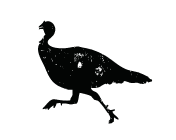Where to hunt your buck when time is running out

The early season is long gone. The northern rut came and went. The late season is here. And now it's time to execute game plans.
But what are those plans? How do we find bucks? Where do we find them? None of these questions are easy or simple to answer. The responses are typically long and filled with exception after exception. It's all about the scenario you find yourself in. But while that's very true, it doesn't simplify the task at hand — which is finding late-season buck beds.
Deer have been pressured for several months now. Deer are wary after weeks of dodging bullets and broadheads. They're beginning to slink back into the shadows and choose daytime beds that offer them the utmost security. Furthermore, they're likely not moving far from those beds during daylight hours unless severe, bitter cold forces them to get up and feed; but you can't always bank on that.
You have to find these buck beds, and sneak in close to them, to stay in the game. And while finding any less-pressured area is key, here are 10 places you'll likely find mature, late-season whitetails. You'll notice that each of these locations provide undeniable advantages to the whitetails that call them home.
1. Ridge Points
Mature deer love to bed on ridge points. Imagine this — a long ridge (either wooded or full of early successional habitat) ends suddenly and juts out. There's a drop-off below it. And a buck is bedded right on that edge. But he only beds there when the wind direction blows down the ridgeline to his bedded position. He knows nothing is coming from the bottom, but beds in a manner that he can cover that direction with his eyes and his rear (the ridgeline) with his nose. Plus, thermals rise up the hill in front of him, which ultimately brings scent up to his nose from a second direction. And there isn't much of anything that can sneak through all those crunch leaves and vegetation — from any direction. See the reasoning behind choosing this location?
2. Leeward Ridges
This concept was first discovered by Realtree.com contributor Dan Infalt. He unearthed this behavior hunting in the wooded hill country of Wisconsin. Oftentimes, you'll see bucks bed on leeward (downwind side) ridges. They do this for a very good reason. Imagine you have a ridge that runs East to West. There's a good bet there will be a buck bedded on the South side of that ridge when the wind is out of the North. The reason is the same as with the ridge point — wind is traveling toward the bed from two directions. The prevailing wind brings scent over the ridge from the northern side. Thermals bring scent up to the bedded deer from the southern side. These two winds meet in the middle — generally somewhere between halfway and three-quarters of the way up the leeward side — and create a wind tunnel. That's where you'll find bedded deer.
Don't Miss: How Mature Bucks Use the Wind
3. Oxbows

4. Marshes
This is where things get sticky. Literally. Bucks love to bed down in marshes for one reason — deer hunters rarely go there. Any dry patches of cover within big marshes are likely to have whitetails inhabiting them. If you have access to such ground, you might want to inhabit it, too. But be careful, it isn't easy to slip into a wet, noisy marsh silently. And keep safety in mind, too. Be aware of your surroundings.
Don't Miss: 5 Overlooked Public Land Deer Hunting Hotspots
5. Flooded Timber Islands
Water. Seeing the common theme here? Hunters and predators are virtually frightened of it . . . it seems. Deer realize that and use it to their advantage. Any dry areas within flooded timber is like a magnet to mature deer. They bed there during daylight hours and rarely come out before the sun goes down. Get a canoe (and a life jacket) and slip in there several hours before daylight — and before deer go back to bed. This can be a great way to fill a tag. You may have to wait until deer get back up and mill about throughout the day to get a shot, but it's still a great play. But again, remember safety. Swamps can be dangerous if you aren't careful — especially in the dark.

6. CRP and CRP-Like Fields
Deer gravitate to CRP and CRP-like cover. When available, deer often prefer it over timbered hideouts. It's all about early successional habitat. And if you have it, you likely see deer year-round — not just during the late-season. If you're still packing a tag, find where deer are bedding in this labyrinth of cover and set up accordingly.
Don't Miss: How to Find CRP Buck Bedding
7. South- and East-Facing Cedar Thickets
There's just something magical about a cedar thicket. They don't offer up much in the way of food (except white cedar), but they do create excellent late-season bedding cover. These trees hold heat in and establish great thermal bedding. It's not uncommon to find deer packed in under a good stand of cedars once the mercury plummets. Furthermore, if the thicket is on a South- or East-facing slope, it becomes even more attractive as deer receive more direct sunlight throughout the day. All said, the slope concept applies to any type of cover, though. Deer need that additional sunlight to help retain body heat during the colder months.
8. Standing Crop Fields

Don't Miss: 25 Tips for Deer Hunting Around Standing Cornfields
9. Clear-Cut or Cutover Timber
I prefer hunting within timber a year or two after it's been selectively harvested. At that point, there's been plenty of time for new growth to sprout up and create that low-level cover deer need. On the flip side, while clear-cut timber isn't as attractive, deer still bed within it. All of the downed trees and treetops that litter the ground create pretty good cover. It isn't uncommon for deer of all age classes to bed and mill about areas that have recently been cleared.
10. Man-Made Structures
Deer learn to adapt. That's what makes them such a successful species. They make the best of the situation they find themselves in. And that's why really old buildings, sheds, barns, machinery, homesteads and other man-made structures in secluded, rural areas are attractive to deer. If the vegetation has grown up around these things, you can bet deer are bedding in and around them. There's one piece of land I hunt regularly that has all of these things, and I commonly find deer tracks inside of the old barns, buildings, corn cribs and houses that are on it.
Deer hunting isn't easy at any point in the season. But it becomes more difficult during the late-season. The elements. The lower number of deer. It all takes a toll and presents a challenge. But once you find that target buck, things get easier. And these places are fantastic locations to begin your search.
It's the last leg of the race. Finish strong. Fill that deer tag.
Don't Miss: 8 Bedding Habits of Mature Deer
Are you a deer hunter wanting to learn how to accomplish your goals? Check out our stories, videos and hard-hitting how-to's on deer hunting.











































